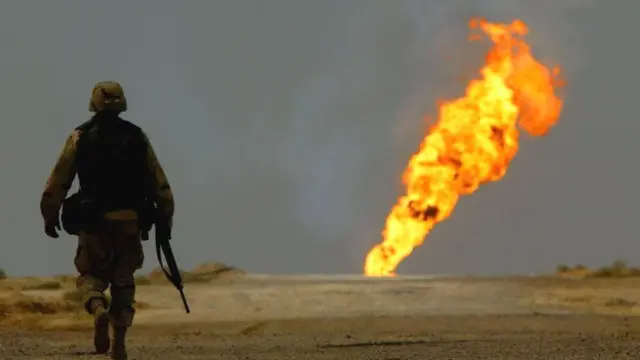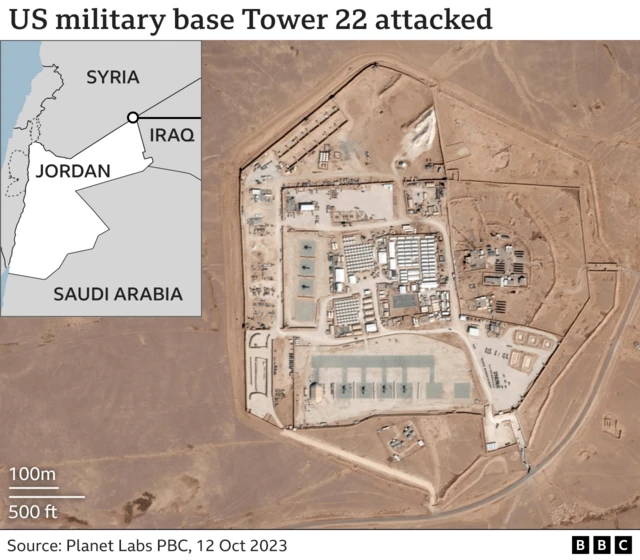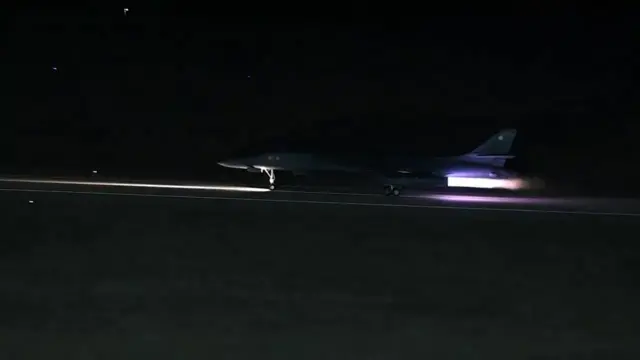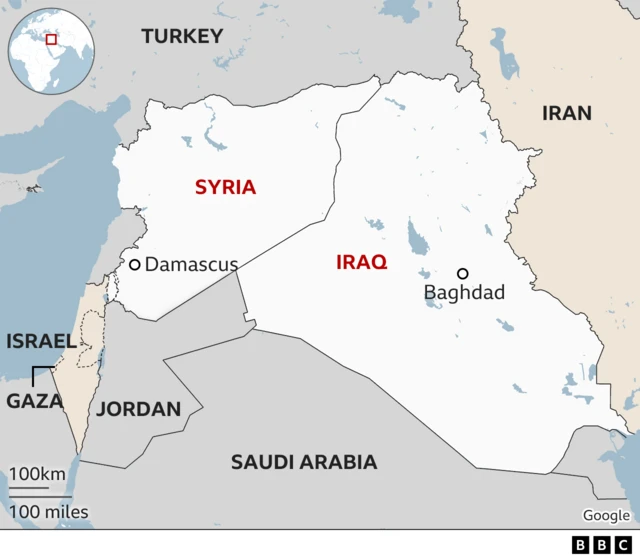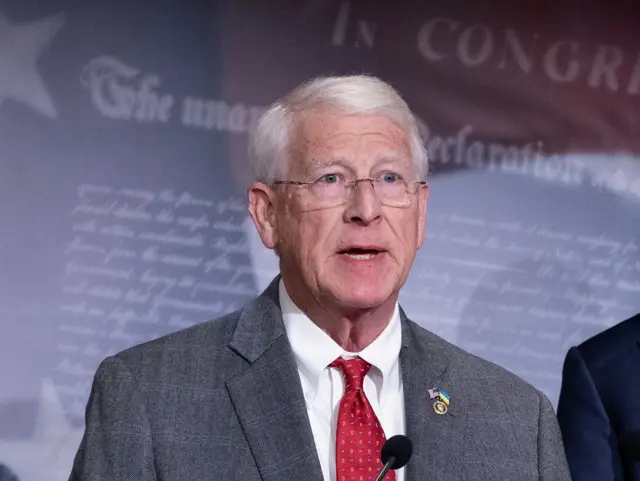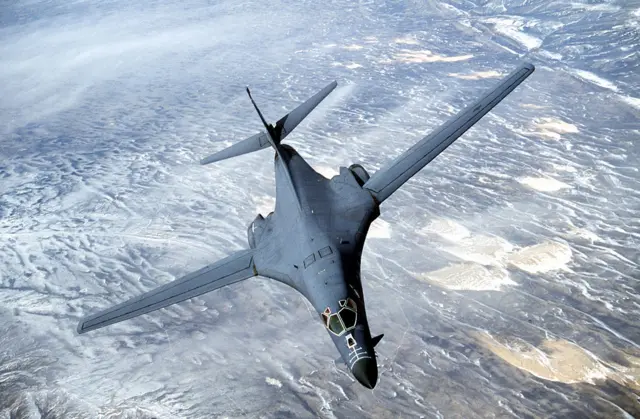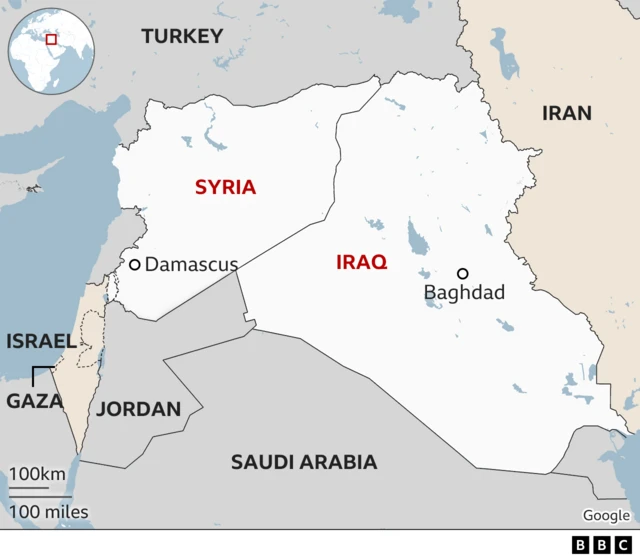US retaliation 'likely to be a series of strikes over days'published at 06:00 GMT 3 February 2024
We’ve heard snippets all week about what this US response might look like.
Earlier this week President Joe Biden said he had made a decision about how the US will respond.
Biden didn’t elaborate but said he held Iran responsible “in the sense that they're supplying the weapons to the people who did it,” adding: "I don't think we need a wider war in the Middle East.”
Then White House national security spokesman John Kirby said: “It's very possible that what you'll see is a tiered approach here, not just a single action but potentially multiple actions.”
On Thursday, officials told the BBC’s US partner CBS News the US had approved plans for a series of strikes over a number of days against targets including Iranian personnel and facilities inside Iraq and Syria.
The officials said weather will be a major factor in the timing of the strikes - and although the US has the capability to bomb in bad weather, it prefers to have eyes on the target as a safeguard against civilians straying into the target area at the last moment.
